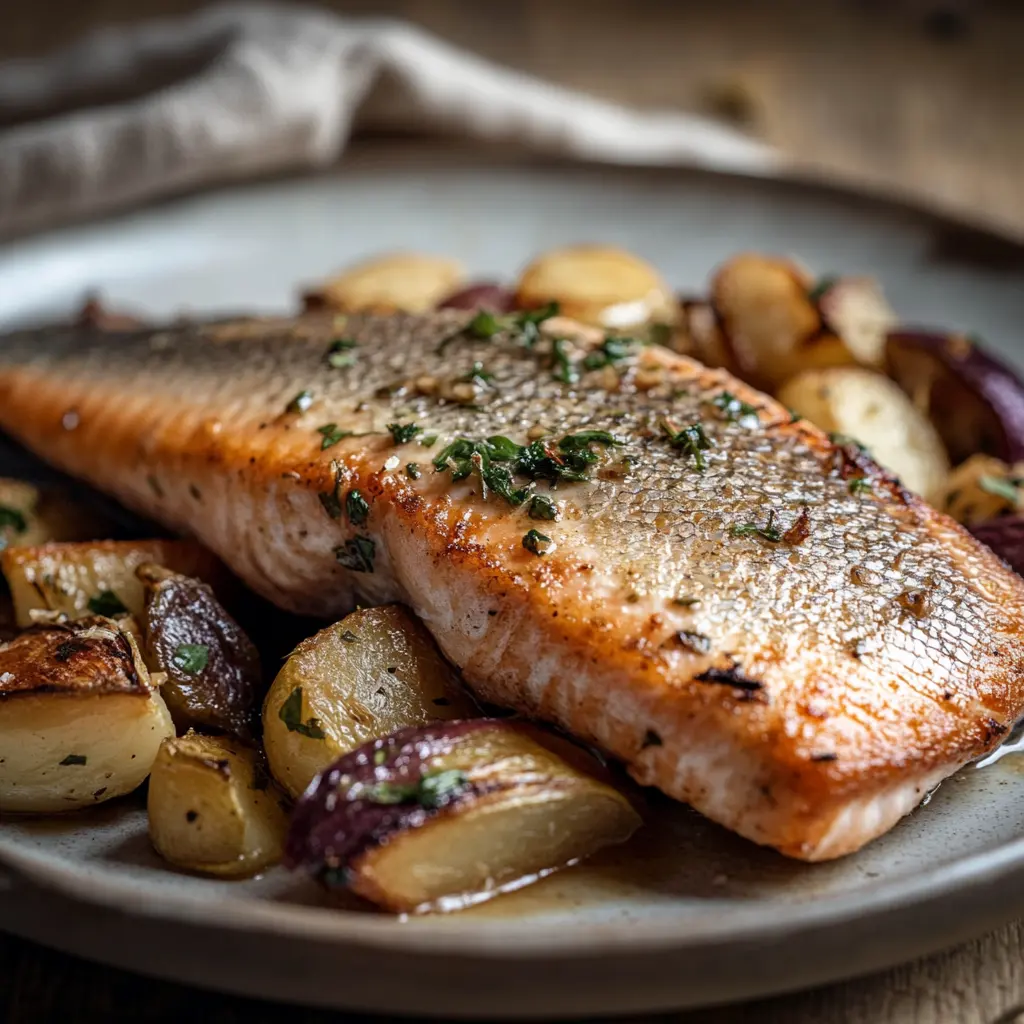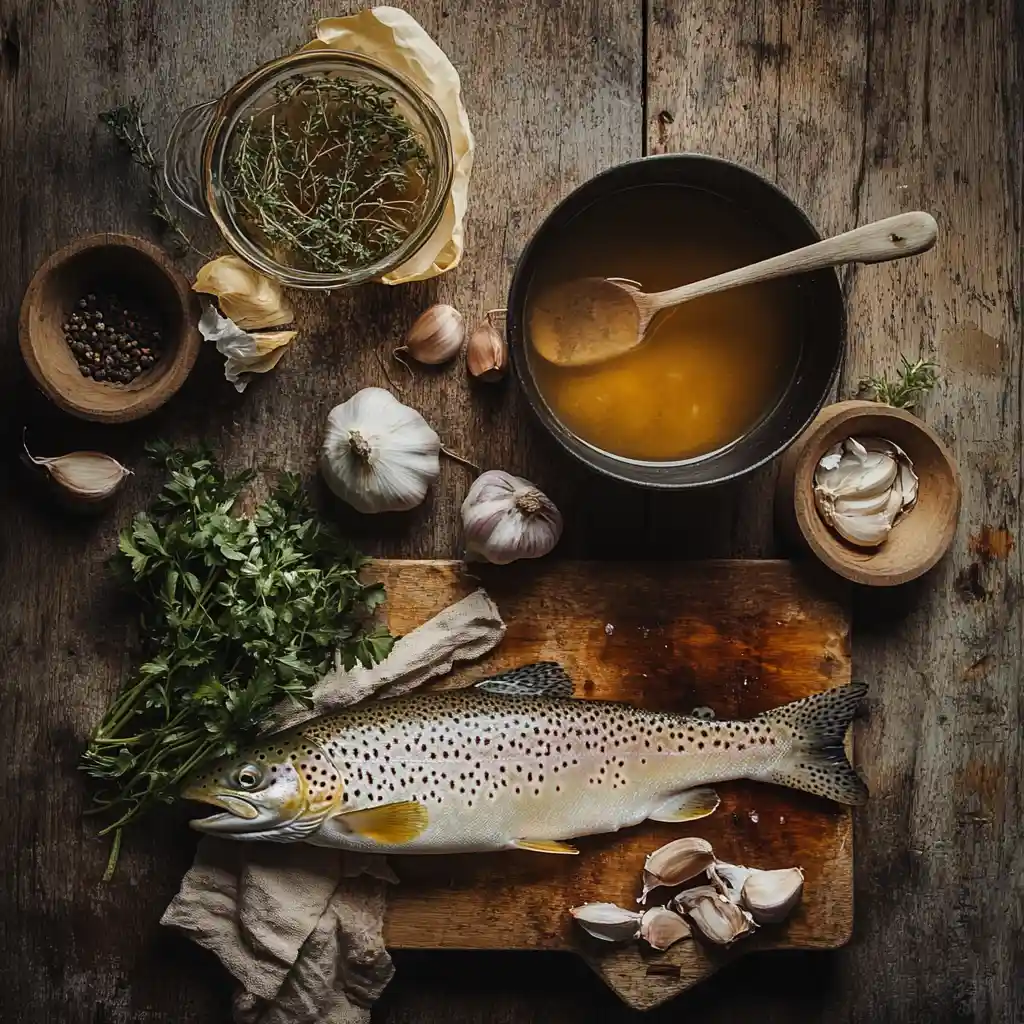
Filleting trout at home might seem intimidating at first, but with the right tools and techniques, you can master the process and dazzle your friends in no time.
At NC Seafood Restaurant, we know a thing or two about prepping the perfect fish, and we’re sharing our favorite tips with you here.
How to Fillet a Trout
Whether you’ve caught your trout or purchased it from a seafood market, knowing how to properly Fillet it will enhance your culinary skills and ensure you get the most out of your catch. Here’s a step-by-step guide to help you fillet a trout like a pro.
What You’ll Need
Before you begin, gather the following tools:
- A sharp fillet knife
- A cutting board
- A pair of fish pliers (optional, for removing the guts)
- Paper towels or a clean cloth
- A bowl for the fish scraps
Step 1: Prepare Your Workspace
Set up a clean, flat workspace. Place your cutting board on a stable surface. Work in an area where cleanup is easy.
Step 2: Clean the Trout
Make a shallow cut along the belly from the anal vent to the head. Remove the entrails and rinse the fish under cold water.
Step 3: Position the Fish
Place the cleaned trout on the cutting board with its belly up and head facing toward you. Hold the body steady.
Step 4: Make the First Cut
Start behind the gills at an angle toward the head. Cut down to the backbone without cutting through it.
Step 5: Filleting the Trout
Slide the knife along the backbone toward the tail in a smooth motion. Adjust your angle to avoid bones.
Step 6: Remove the Fillet
Carefully lift the fillet off the fish. Use the knife to help separate any attached pieces.
Step 7: Repeat on the Other Side
Flip the trout over and repeat the same steps to remove the second fillet.
Step 8: Trim and Debone
Inspect the fillets for pin bones. Remove them with pliers and trim off excess fat or skin.
Step 9: Rinse and Store
Rinse fillets under cold water, pat them dry, and store in an airtight container or wrap in plastic.
Tips for Success
- Use a Sharp Knife: A sharp fillet knife makes the process much easier and safer. Dull knives can slip and cause accidents.
- Practice Patience: Take your time while Filleting to avoid wasting meat and ensure clean cuts.
- Keep the Skin On (Optional): If you prefer, you can leave the skin on the fillets until you’re ready to cook them. The skin can add flavor and helps hold the fillet together during cooking.
Why Properly Preparing Fish is Important
Properly preparing fish, including trout, is essential for several reasons that impact both safety and flavor.
Food Safety
One of the primary reasons to prepare fish correctly is to ensure food safety. Fish can harbor harmful bacteria, parasites, and contaminants that pose health risks. By cleaning and filleting the fish properly, you minimize the risk of foodborne illnesses.
You’ll need to remove the entrails and rinse the fish thoroughly to eliminate any potential pathogens. Cooking fish to the appropriate internal temperature (145°F or 63°C) also ensures harmful organisms are destroyed, making it safe to eat.


Quality and Freshness
Proper preparation significantly affects the quality and freshness of the fish. The longer fish remains uncleaned, the more likely it is to deteriorate. Bacteria can multiply rapidly in the guts, leading to spoilage. Cleaning the fish immediately after catching or purchasing it helps maintain its flavor and texture, ensuring a fresher taste when cooked.
Removing the head and entrails also reduces the risk of spoilage, allowing for longer storage without loss of quality.
Enhanced Flavor and Texture
The way fish is prepared directly impacts its flavor and texture. Properly filleting trout, for instance, ensures that you’re getting the most meat possible without unwanted bones or gristle.
The skin and fat can also be left intact for certain cooking methods, enhancing the dish’s richness.


Presentation
Properly filleted fish presents beautifully on the plate, enhancing the dining experience. Clean cuts and well-prepared fillets allow for various cooking techniques, such as grilling, baking, or pan-searing, that showcase the fish’s natural beauty.
Sustainability and Resource Management
By learning how to properly prepare fish, you also contribute to sustainable fishing practices. Understanding how to maximize the use of each catch minimizes waste, ensuring that you make the most of your fishing efforts. Proper preparation allows you to utilize all parts of the fish, whether it’s for fillets, stocks, or other recipes.

Our Favorite Trout Recipes
Now that you know how to fillet a trout, you can put your skills to work and make one of these delicious recipes for your next gathering or family dinner.
Smoked Trout Dip
Why You’ll Love It: This creamy dip is packed with flavor and perfect for parties or a cozy night in!
Ingredients:
- Smoked trout (store-bought or homemade)
- Cream cheese
- Sour cream or Greek yogurt
- Fresh herbs (dill, chives, or parsley)
- Lemon juice
- Salt and pepper
Quick Steps:

- Step 1: In a bowl, combine softened cream cheese, sour cream, and flaked smoked trout.
- Step 2: Stir in chopped herbs, a squeeze of lemon juice, and season with salt and pepper.
- Step 3: Refrigerate for about 30 minutes to let the flavors meld. Serve with crackers or veggies!
Easy Oven-Baked Trout with Lemon Butter
Why You’ll Love It: This dish is simple, healthy, and bursting with zesty flavor!
Ingredients:
- Whole trout, cleaned
- Lemon slices
- Fresh herbs (parsley, thyme, or dill)
- Butter
- Olive oil
- Salt and pepper
Quick Steps:
- Step 1: Preheat the oven to 400°F (200°C). Place the cleaned trout on a baking sheet lined with parchment paper.
- Step 2: Drizzle with olive oil, then season with salt and pepper. Stuff the cavity with lemon slices and fresh herbs.
- Step 3: Dot the top of the fish with small pieces of butter.
- Step 4: Bake for about 15-20 minutes, until the fish flakes easily with a fork. Enjoy the buttery, lemony goodness!

Pan-Seared Trout with Spices
Why You’ll Love It: This quick and flavorful dish is perfect for a weeknight dinner!
Ingredients:
- Trout fillets
- Olive oil
- Paprika, garlic powder, and black pepper (or your favorite spice blend)
- Fresh lemon juice
Quick Steps:
- Step 1: Pat the trout fillets dry and season both sides with spices.
- Step 2: In a skillet, heat olive oil over medium-high heat.
- Step 3: Place the fillets skin-side down in the hot pan. Cook for about 4-5 minutes, then flip and cook for another 2-3 minutes until crispy and cooked through.
- Step 4: Squeeze fresh lemon juice over the top before serving for an extra burst of flavor!

Health Benefits of Trout
Packed with essential nutrients, trout offers a ton of health benefits that make it a perfect choice for almost any meal.
Rich Source of Omega-3 Fatty Acids
One of the standout features of trout is its high content of omega-3 fatty acids. These essential fats are known for their anti-inflammatory properties and have been linked to a reduced risk of heart disease.
Omega-3s can help lower blood pressure, decrease triglycerides, and improve overall heart health. Regular consumption of trout can contribute to better cardiovascular function, making it a heart-friendly food choice.
High in Protein
Trout is an excellent source of high-quality protein, which is vital for building and repairing tissues in the body. Protein is essential for muscle development, immune function, and overall health. Including trout in your diet can help meet your protein needs, making it the perfect choice for athletes, active individuals, and those looking to maintain a healthy lifestyle.
Packed with Vitamins and Minerals
Trout is not only rich in healthy fats and protein but also loaded with essential vitamins and minerals. It contains significant amounts of B vitamins, including B12, niacin (B3), and B6, which play crucial roles in energy metabolism and neurological health.
Trout also provides important minerals such as selenium, phosphorus, and potassium, which are vital for bone health, muscle function, and overall metabolic processes.
Supports Brain Health
The omega-3 fatty acids found in trout are also known to support brain health. These healthy fats are essential for maintaining cognitive function and may help reduce the risk of neurodegenerative diseases. Regular consumption of trout can contribute to improved memory, focus, and overall brain function, making it a smart choice for mental wellness.
Low in Calories and Saturated Fat
Trout is a low-calorie fish that is low in saturated fat, making it an excellent option for those looking to manage their weight or reduce their fat intake. A serving of trout is not only satisfying but also nutritious, allowing you to enjoy a flavorful meal without excessive calories or unhealthy fats.
Promotes Healthy Skin and Hair
The nutrients found in trout, particularly omega-3 fatty acids and B vitamins, contribute to healthy skin and hair. Omega-3s help maintain skin elasticity and hydration, while B vitamins support hair growth and overall scalp health. Incorporating trout into your diet can lead to a glowing complexion and lustrous locks.
Environmentally Friendly Choice
Choosing sustainably sourced trout not only benefits your health but also supports environmental conservation. Many fisheries practice responsible aquaculture methods, ensuring that trout is raised in healthy ecosystems without depleting natural resources. By opting for sustainably sourced trout, you can enjoy its health benefits while contributing to the preservation of our oceans and waterways.
Get the Best Seafood at NC Seafood Restaurant

Whether you enjoy it grilled, baked, or smoked, trout is a versatile fish that can be easily integrated into a variety of dishes. So next time you’re looking for a healthy meal option, consider trout—a tasty way to nourish your body and support a healthy lifestyle.
To stay updated on all things seafood, don’t forget to sign up for the NC Seafood Restaurant monthly newsletter! It provides a recap of our latest blogs and recipes, along with information about local Farmers Markets and events that you won’t want to miss. Dive into the delicious world of seafood and explore new flavors and ideas with us each month!
